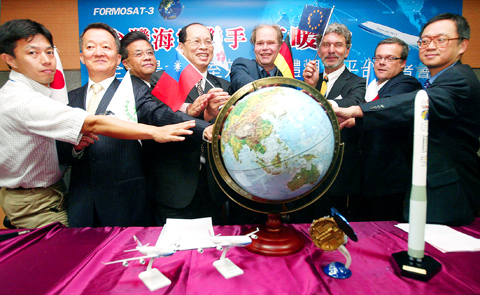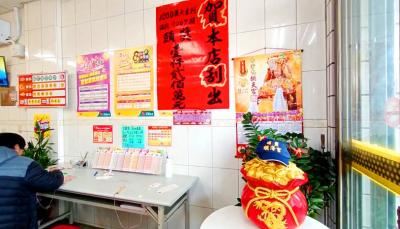The world's climate equilibrium has been severely disturbed in the past 100 years by human industrialization. To understand the seriousness of the situation, a group of international scientists and some leading airliners are going to great heights — all the way up to 9,000m above sea level — to study just how serious climate change really is, and possibly how the situation can be turned around.
“Before the Industrial Revolution, the Earth’s carbon dioxide concentration averaged 280 parts per million [ppm] for more than 650,000 years — however, in a short 250 years, humans have managed to increase that figure to the current 380ppm,” Toshinobu Machida, chief of Japan’s National Institute for Environmental Studies Office for Atmospheric and Oceanic Monitoring, told the Taipei Times during his visit to Taipei on Tuesday.
Since 1993, Machida and his team have worked on CONTRAIL (Comprehensive Observatory Network for Trace gases by Airliners), a project that monitors greenhouse gas concentrations in the atmosphere by installing observation equipment on Japan Airlines charter flights.

PHOTO: CNA
“From our observations over the past decade, we have found the carbon concentration in the upper troposphere, which is 10km to 12km above sea levels, has increased at about 1.9ppm per year,” Machida said.
The phenomenon has been observed on flights that travel from the northern to the southern hemisphere [Japan to Australia], he said, adding that “since the global air current naturally goes east to west and rarely north to south, our observations indicate that the carbon increase is a global problem.”
Almost simultaneously, a group of scientists sponsored by the European Commission launched a similar project in 1993 across the Atlantic Ocean called MOZAIC (Measurement of Ozone and water vapor by Airbus In-service airCraft), which installs equipment onto Airbus aircrafts from various airlines to measure atmospheric composition.
MOZAIC was transformed in 2005 into the Integration of Routine Aircraft Measurements into a Global Observing System (IAGOS), featuring a smaller machine with better functions.
Since 1993 the two programs have contributed to a number of important findings, leading to the publication of over 180 international papers, and driving the modification of climate models, IAGOS director Andreas Volz-Thomas said.
“For example, water vapor in the upper troposphere over the Northern Atlantic was found to be much higher than previous climate models suggested — over 100 percent saturation — data that changed our understanding of cirrus clouds and persistent contrails, and how much they impacted the climate,” Volz-Thomas said.
IAGOS lent invaluable information on how quickly carbon mixes in turbulence, he added.
“While carbon in the troposphere can be mixed thoroughly by turbulence in a matter of days, it may take over a year for the gas to reach the stratosphere [10km to 50 km above ground],” he said. “Most of the carbon up there was emitted by human sources all over the world, possibly decades ago.”
Since carbon that reaches the stratosphere stays there for more than 10 years before dispersing, it can similarly seriously affect the world’s climate, Volz-Thomas said.
“And by climate, we are not just talking about temperature,” Machida said. “Climate change affects weather patterns, precipitation areas and amount, and in turn crop growth, landscape changes and human survival.”
Though both MOZAIC/IAGOS and CONTRAIL have been very successful, a large piece of the puzzle was missing — data over the Pacific Ocean, which pertains to emission behavior in China and other Southeast Asian countries.
To the scientists’ excitement, starting next year, the gap will be filled by Pacific Greenhouse Gases Measurement (PGGM), a Taiwan project sponsored both by the government and two businesses — China Airlines (CAL) and Evergreen Marine Corp.
“Our motivation is simple — by collecting important data, [policymakers] will eventually recognize our work and start using our data [to stop global warming,]” said the man behind the project-union operation, PGGM project leader Wang Kuo-ying (王國英), a professor at National Central University.
“MOZAIC/IAGOS lack data from the Pacific Ocean because its aircrafts do not fly to Asia. With Taiwan’s prime geographic location, CAL and Evergreen can offer them just what they need,” he said.
The structure of PGGM is both vertically and horizontally sound, Wang said.
“On the satellite level, Taiwan’s FORMOSAT-3 [a climate satellite] data will be cross-examined with the US’ OCO satellite [to be launched this year] and Japan’s GOSAT satellite; in addition, we will observe the upper and lower atmosphere with CAL flights and Evergreen cargo ships,” he said.
Data obtained by airplanes can also offer valuable information on climate satellite accuracy, since satellite technologies are relatively new, he said.
The data, together with IAGOS in other parts of the planet, cross-referenced with CONTRAIL statistics, will piece together a picture for long-term global pollutant transport, and may change the world’s perception of the environment, Wang said.
“PGGM will be one of the best presents Taiwan can give to the world — though we are not bounded by the Kyoto protocol, we are still making efforts to combat global warming,” he said.
Asked whether the international community was dealing with climate change with enough urgency, both Machida and Volz-Thomas replied with a firm “no.”
“The question is not ‘how much time do we have until we must take action’ — global warming has already started,” Machida said.
“What scientists can do is to increase the public’s awareness of the problem and prompt politicians to form laws accordingly, however, there is a long way between good data and policy reform,” Volz-Thomas said.
However, some changes in this country may already be on the horizon, as the PGGM marks the first time Taiwanese businesses have participated in a not-for-profit effort to fight climate change on an international scale.
“Though few [in the airliner industry] are touching the issue, global warming is a problem that will confront us head-on soon enough — short of making carbon-free planes [which is the industry’s aspiration in 50 years], by taking action now, CAL can be the leader in aviation in fighting climate change,” CAL corporate safety division vice president David Tai (戴旭東) said.

A Vietnamese migrant worker on Thursday won the NT$12 million (US$383,590) jackpot on a scratch-off lottery ticket she bought from a lottery shop in Changhua County’s Puyan Township (埔鹽), Taiwan Lottery Co said yesterday. The lottery winner, who is in her 30s and married, said she would continue to work in Taiwan and send her winnings to her family in Vietnam to improve their life. More Taiwanese and migrant workers have flocked to the lottery shop on Sec 2 of Jhangshuei Road (彰水路) to share in the luck. The shop owner, surnamed Chen (陳), said that his shop has been open for just

Global bodies should stop excluding Taiwan for political reasons, President William Lai (賴清德) told Pope Francis in a letter, adding that he agrees war has no winners. The Vatican is one of only 12 countries to retain formal diplomatic ties with Taiwan, and Taipei has watched with concern efforts by Beijing and the Holy See to improve ties. In October, the Vatican and China extended an accord on the appointment of Catholic bishops in China for four years, pointing to a new level of trust between the two parties. Lai, writing to the pope in response to the pontiff’s message on Jan. 1’s

TAKE BREAKS: A woman developed cystitis by refusing to get up to use the bathroom while playing mahjong for fear of disturbing her winning streak, a doctor said People should stand up and move around often while traveling or playing mahjong during the Lunar New Year holiday, as prolonged sitting can lead to cystitis or hemorrhoids, doctors said. Yuan’s General Hospital urologist Lee Tsung-hsi (李宗熹) said that he treated a 63-year-old woman surnamed Chao (趙) who had been sitting motionless and holding off going to the bathroom, increasing her risk of bladder infection. Chao would drink beverages and not urinate for several hours while playing mahjong with friends and family, especially when she was on a winning streak, afraid that using the bathroom would ruin her luck, he said. She had

MUST REMAIN FREE: A Chinese takeover of Taiwan would lead to a global conflict, and if the nation blows up, the world’s factories would fall in a week, a minister said Taiwan is like Prague in 1938 facing Adolf Hitler; only if Taiwan remains free and democratic would the world be safe, Deputy Minister of Foreign Affairs Francois Wu (吳志中) said in an interview with Italian newspaper Corriere della Sera. The ministry on Saturday said Corriere della Sera is one of Italy’s oldest and most read newspapers, frequently covers European economic and political issues, and that Wu agreed to an interview with the paper’s senior political analyst Massimo Franco in Taipei on Jan. 3. The interview was published on Jan. 26 with the title “Taiwan like Prague in 1938 with Hitler,” the ministry